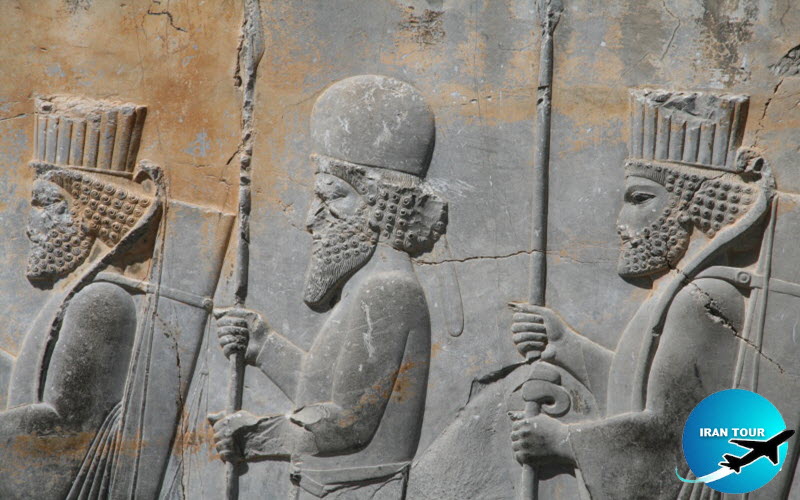Copyright 2020 - 2021 irantour.tours all right reserved
Designed by Behsazanhost
Persepolis Army Street
Army Street
What is today known as the Army Street stretches from the east door of the Gate of All Lands to the north courtyard of the Hall of Hundred Columns? It is 92 m long and about 10 m wide. It was bordered by thick mud-brick walls, of which only low bases remain. At regular intervals of about 7 m, these walls were marked by stepped niches, where the guards might have stood on ceremonial occasions. Spacious enough to accommodate at least ten thousand people, the street could have served as a parade setting for the Immortal regiment.
 |
Achaemenian Army
The army was a particularly important element within the Achaemenid Empire. At first, the Achaemenid army consisted wholly of Iranian warriors, and even when other regions were subjugated. Persians and Medes formed the made us of the troops. In later periods, the Iranians also incorporated mercenaries The army committed of teens, and a large Ber actual size of the imperial army was never as large as the Greeks de med Carefalemination of topography, logistics organization of the army, and official battle orders have enabled historians to arrive at reasonable figures for Iranian forces Thus, Xerxess "3.000.000 fighting men mentioned by Herodotus have been reduced to some 70.000 infantry and 9.000 horse-men the '900.000 strong armies of Artaxerxes II" at Cunara was in reality no more than 40.000, and the "1.040.000 soldiers of Darius II" at Gaugamela has been brought down to 34,000 cavalries and some infantry:
The organization of the army was based on a decimal system. Ten men composed a company ten companies made up battalion ten battalions formed a division, and these divisions were a corps. One corps of the army consisted of 10,000 elite Iranian foot soldiers, the so-called "Immortals 1.000 of whom were the personal guard of the king. The army was led by a supreme commander, who was either the King of Kings himself or a trusted close relative. A characteristic of the Achaemenid period is that dignitaries participated in actual fighting, and many of them lost their lives in battle.
- Details
- Category: Museums of Shiraz





